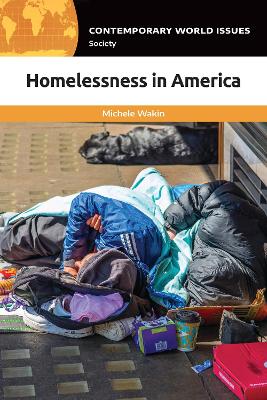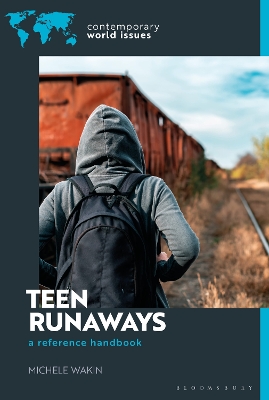Contemporary World Issues
2 total works
This title provides a one-stop resource for understanding the crisis of homelessness in the United States. It covers risk factors for homelessness, societal attitudes about the homeless, and public and private resources designed to prevent homelessness and help those in need.
There are a number of questions to be answered when addressing the subject of homelessness in the United States. What are the primary causes of homelessness? What are the economic and socioeconomic factors that have an impact on homeless people? What demographic trends can be identified in homeless populations? Is the U.S. addressing the needs and concerns of homeless people adequately? Where are the areas with the highest homeless populations? What can be done to help homeless people who live with mental illness and/or addiction problems?
Homelessness in America: A Reference Handbook answers all of these questions and more. It thoroughly examines the history of homelessness in the U.S., shining a light on the key issues, events, policies, and attitudes that contribute to homelessness and shape the experience of being homeless. It places special emphasis on exploring the myriad problems that force people into homelessness, such as inadequate levels of affordable housing, struggles with substance abuse, and gaps in the U.S.' social welfare system. In addition, it explains why some demographic groups are at heightened risk of homelessness.
- Original essays that provide insightful perspectives on causes and effects of homelessness
- Tables, graphs, and charts that provide important data for understanding various facets of homelessness
- A chronology of important events, laws, policies, and reforms pertaining to homelessness
- A glossary of terms used in the study of homeless populations
An all-in-one resource for understanding the issue of teen runaways in the USA, including the demographic and socioeconomic dimensions of the problem. This work examines every aspect of the issue, from the key drivers of the phenomenon (such as estrangement from family or vulnerability to abuse) to the dangers of life as a runaway (including increased vulnerability to hunger to human trafficking) to the efforts of agencies, organizations, and advocates to reduce the number of teen runaways and provide assistance and resources to teenagers already on the street.
Features include personal essays on the experience of being a teen runaway; illuminating figures, tables, and primary sources that document various facets and trends; glossary of terms; chronology of events; and information for government agencies, child welfare organizations, and other parties working to reduce teen runaway populations across the USA.

